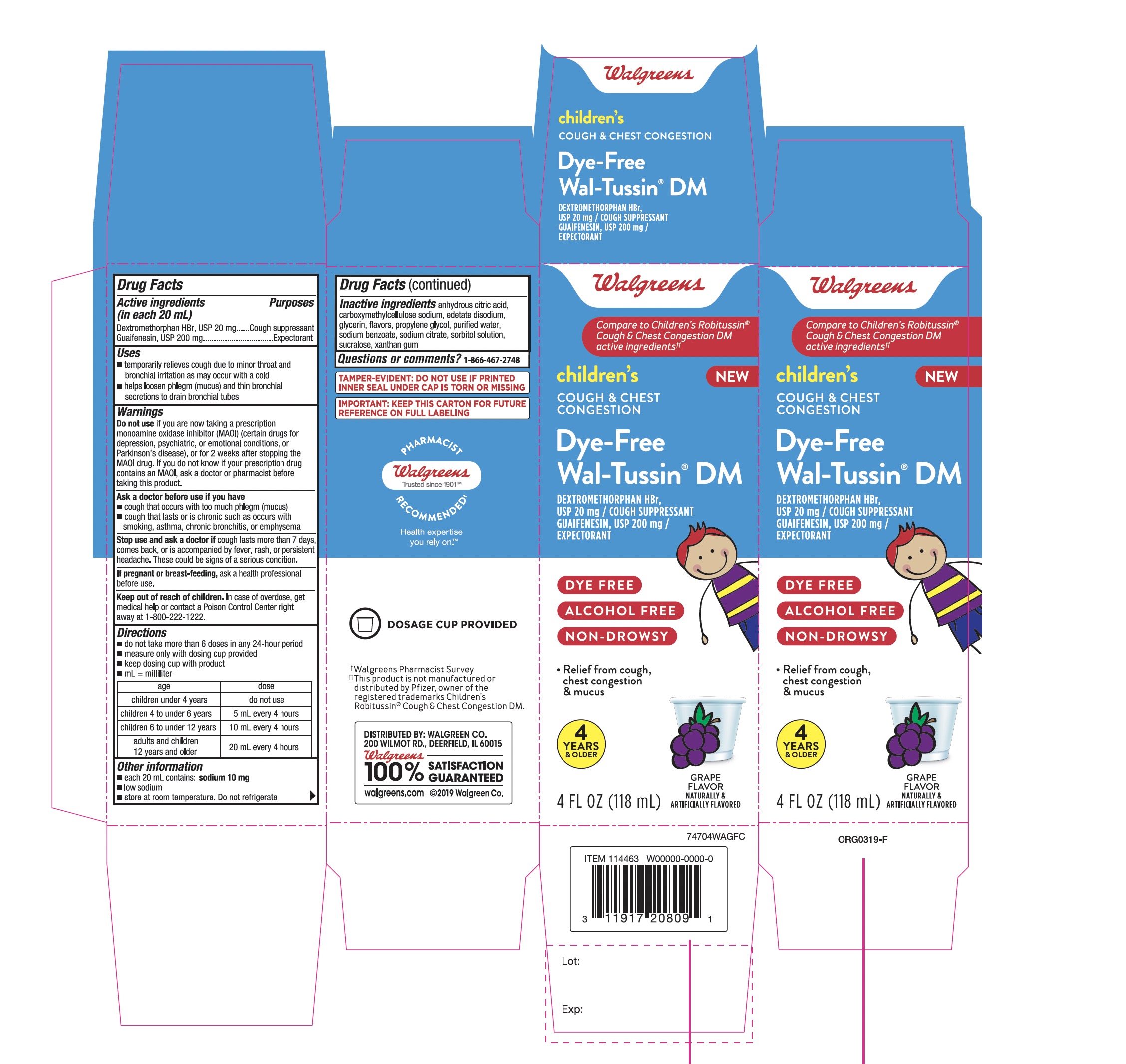Walgreens Grape Flavor | Children Cough And Chest Congestion Liquid while Breastfeeding

What is Walgreens Grape Flavor | Children Cough And Chest Congestion Liquid used for?
Brief: Cough suppressant Expectorant
Is using Walgreens Grape Flavor | Children Cough And Chest Congestion Liquid safe or dangerous while breastfeeding?

Walgreens Grape Flavor | Children Cough And Chest Congestion Liquid Breastfeeding Analsys
Dextromethorphan hydrobromide while Breastfeeding
SafeCAS Number: 125-71-3
Cough suppressant related with morphine and codeine which is lacking of analgesic or sedative properties. Commonly prescribed by pediatricians. On latest update relevant data on breastfeeding was not found. Because reported low toxicity and mild side effect it is considered to be safe while breastfeeding. Frequently associated to caffeine and other products that are usually compatible with breastfeeding. Avoid use of multiple drug and alcohol containing medication.
Guaifenesin while Breastfeeding
Low RiskCAS Number: 93-14-1
It is used as an expectorant, alone or in association with other products. Proofs on its effectiveness are sparse. In some instances, preparations of Guaifenesin may contain alcohol as excipient with a concentration as high as 5%. At latest update, relevant published data on excretion into breast milk were not found. Until more information on this medication is available, other option known to be safer would be recommended, mostly in the post-natal period or in cases of prematurity. If used while breastfeeding, a moderate use with the lowest dose as possible and avoiding those preparations with alcoholic excipient, should be preferred. Because effectiveness is poor and likelihood of side effects does exist, especially in multi-association, the US Agency for Drug Administration (FDA) is currently doing efforts for discontinuation of this and others at-the-counter products, that are formulated for cough relief (Guaifenesin, Dextromethorphan, Phenylephrine, Pseudoephedrine, Brompheniramine, etc.)
Walgreens Grape Flavor | Children Cough And Chest Congestion Liquid Breastfeeding Analsys - 2
Dextromethorphan hydrobromide while Breastfeeding
CAS Number: 125-71-3
Neither the excretion of dextromethorphan in milk nor its effect on breastfed infants have been studied. It is unlikely that with usual maternal doses amounts in breastmilk would harm the nursing infant, especially in infants over 2 months of age. It is best to avoid the use of products with a high alcohol content while nursing.
Guaifenesin while Breastfeeding
CAS Number: 93-14-1
Neither the excretion of guaifenesin in milk nor its effect on breastfed infants have been studied. It is unlikely that with usual maternal doses amounts in breastmilk would harm the nursing infant, especially in infants over 2 months of age. It is best to avoid the use of products with a high alcohol content while nursing.
I already used Walgreens Grape Flavor | Children Cough And Chest Congestion Liquid and meanwhile I breastfed my baby should I be concerned?
During whole lactation period you shall first discuss with your doctor and then together you shall decide whether you shall take that drug or not however if you have already taken Walgreens Grape Flavor | Children Cough And Chest Congestion Liquid then you shall inform your doctor, But you should not be worried too much as Walgreens Grape Flavor | Children Cough And Chest Congestion Liquid comes in category of low risk drug.
My doctor has prescribed me Walgreens Grape Flavor | Children Cough And Chest Congestion Liquid, what should I do?
Though Walgreens Grape Flavor | Children Cough And Chest Congestion Liquid dose not comes in category of safe drugs rather it comes in category of low risk but if your doctor is aware that you are breastfeeding your baby and has still recommended it then its advantages must be outweighing the risks.
If I am using Walgreens Grape Flavor | Children Cough And Chest Congestion Liquid, will my baby need extra monitoring?
Not much
Who can I talk to if I have questions about usage of Walgreens Grape Flavor | Children Cough And Chest Congestion Liquid in breastfeeding?
US
National Womens Health and Breastfeeding Helpline: 800-994-9662 (TDD 888-220-5446) 9 a.m. and 6 p.m. ET, Monday through Friday
UK
National Breastfeeding Helpline: 0300-100-0212 9.30am to 9.30pm, daily
Association of Breastfeeding Mothers: 0300-330-5453
La Leche League: 0345-120-2918
The Breastfeeding Network supporter line in Bengali and Sylheti: 0300-456-2421
National Childbirth Trust (NCT): 0300-330-0700
Australia
National Breastfeeding Helpline: 1800-686-268 24 hours a day, 7 days a week
Canada
Telehealth Ontario for breastfeeding: 1-866-797-0000 24 hours a day, 7 days a week
